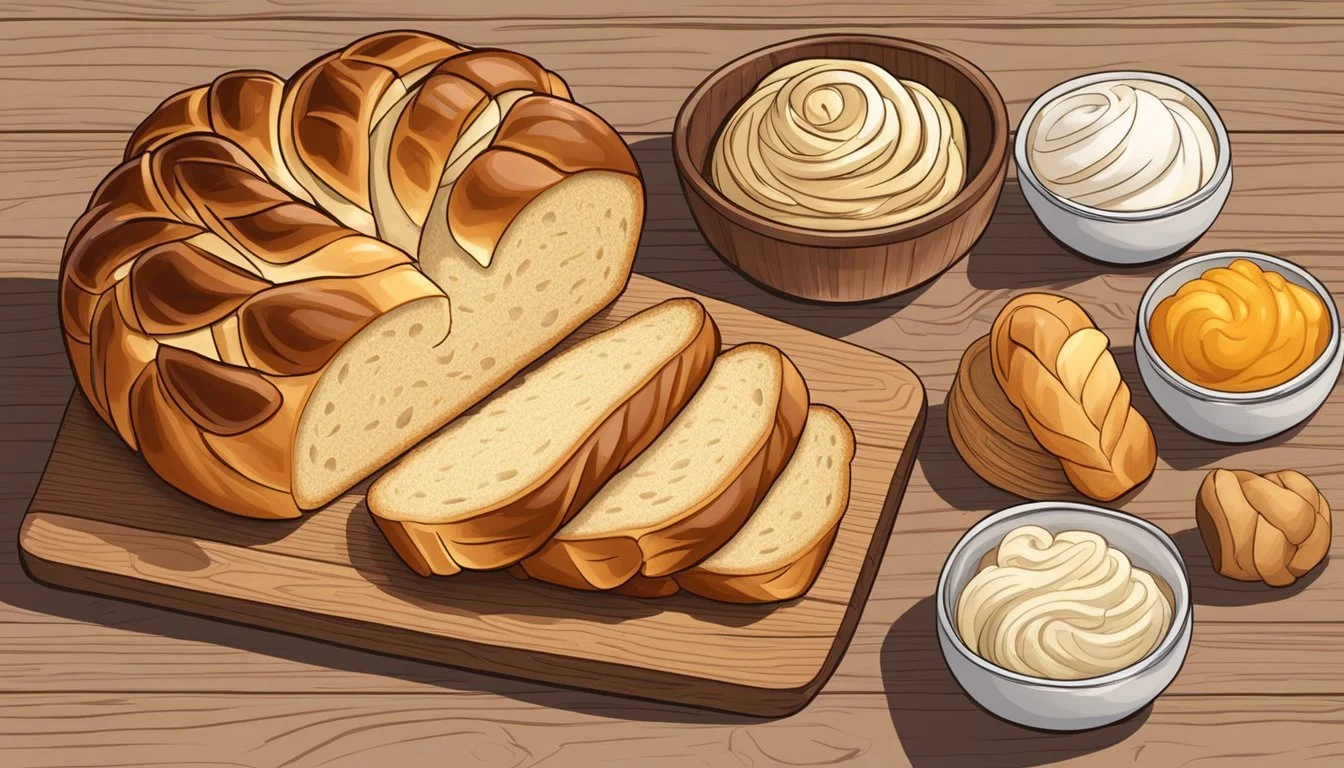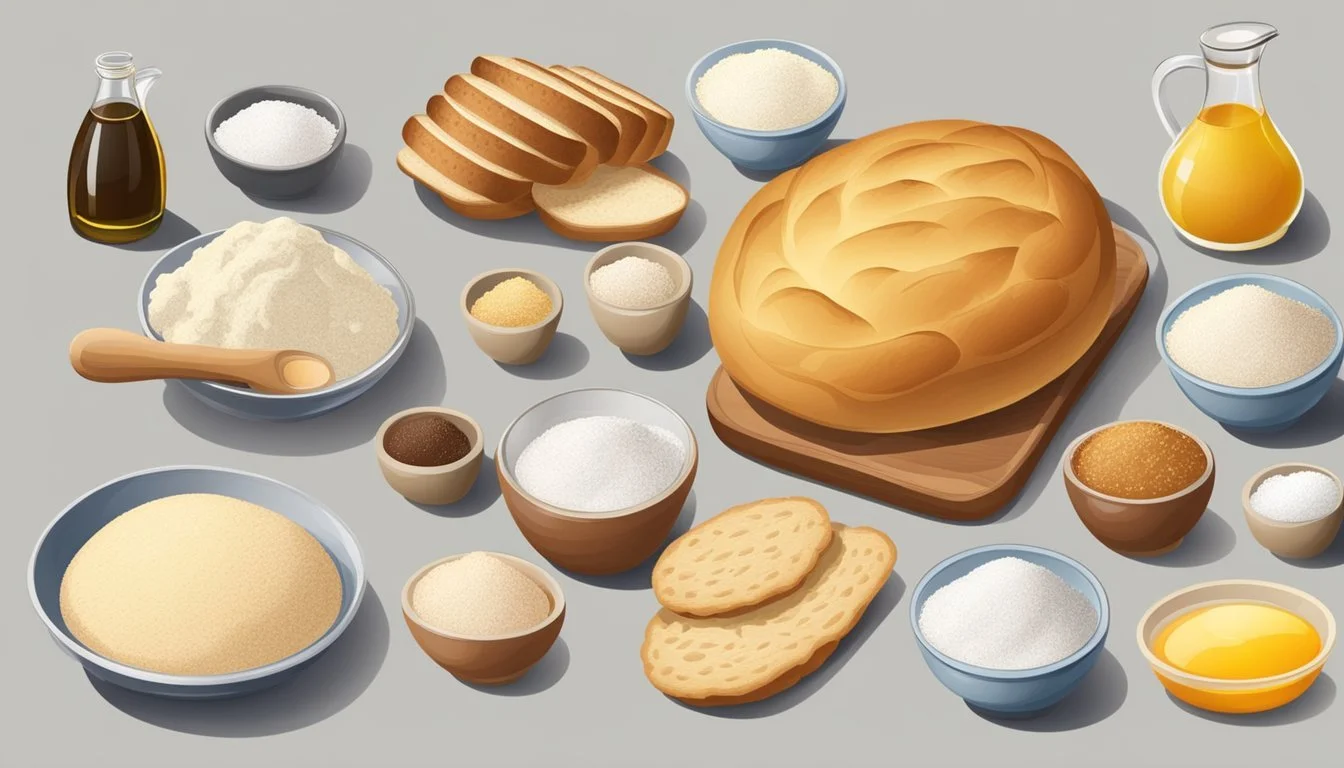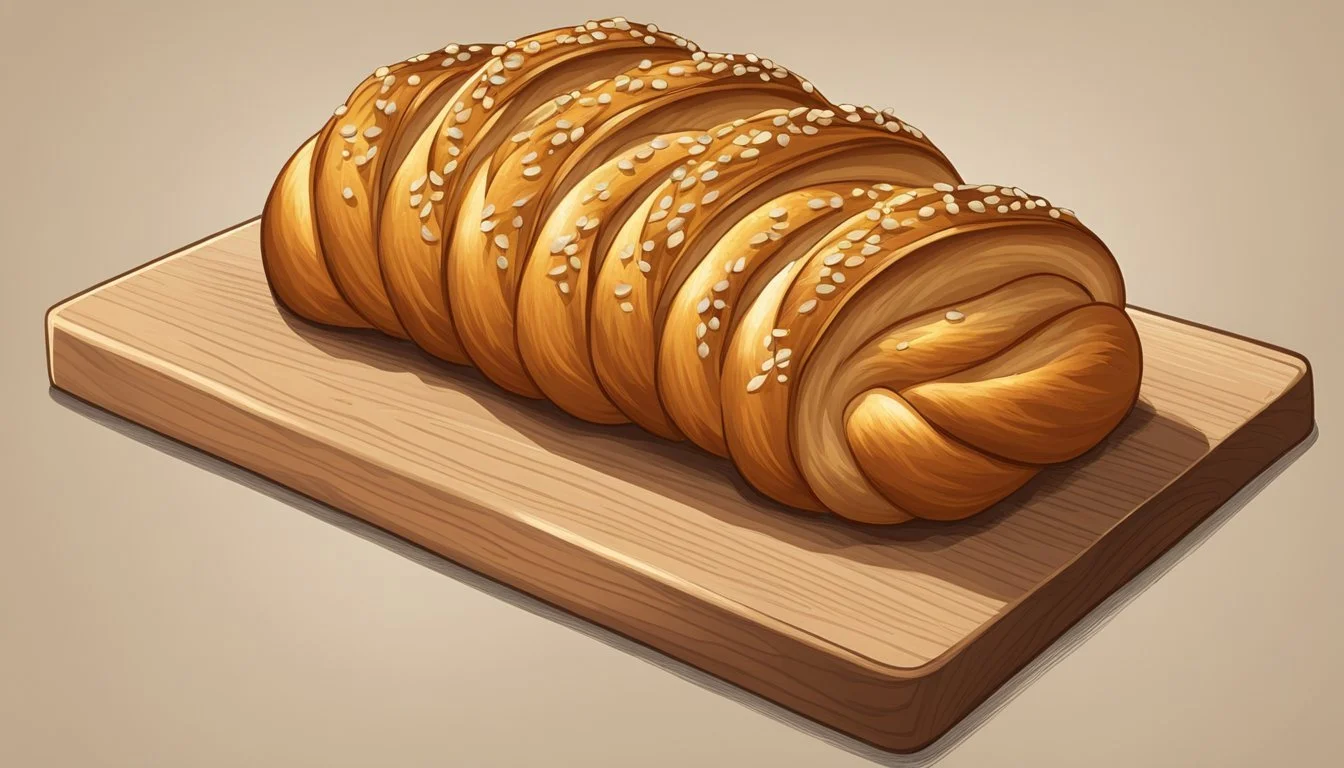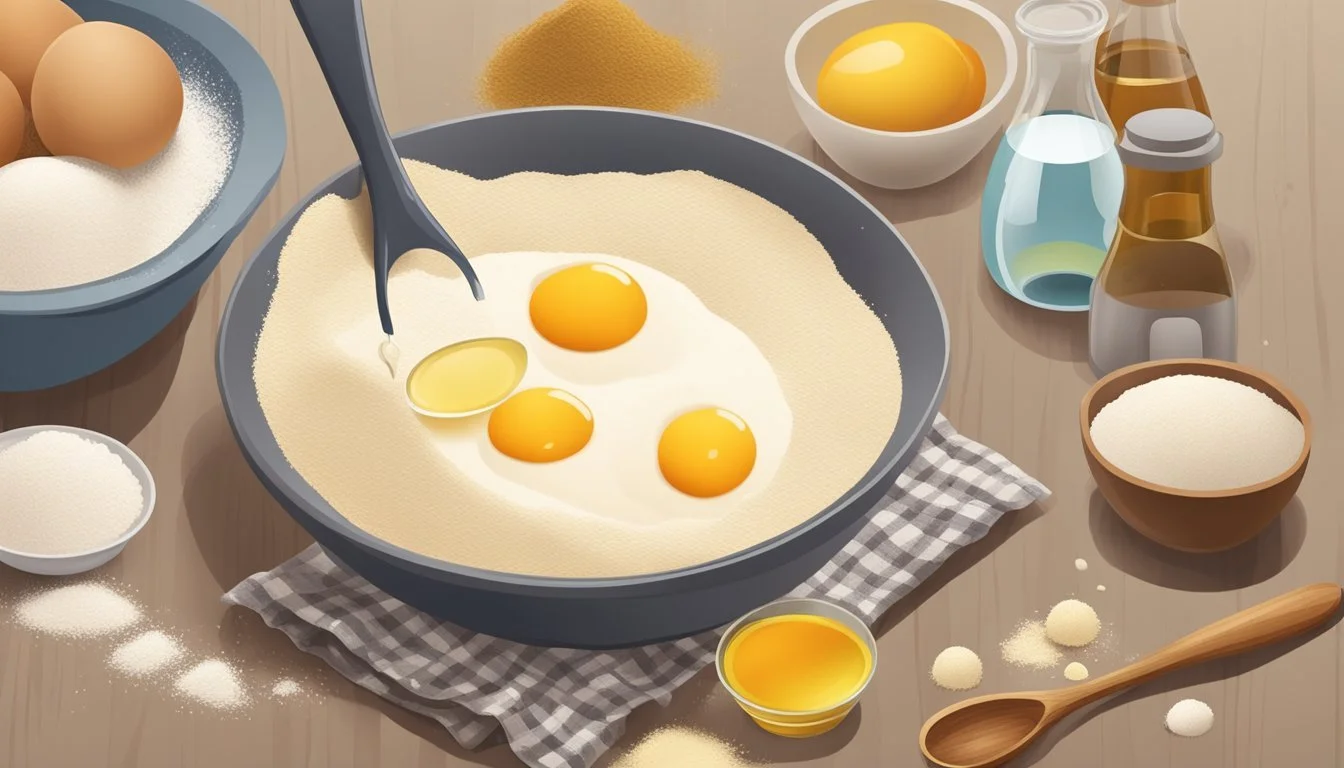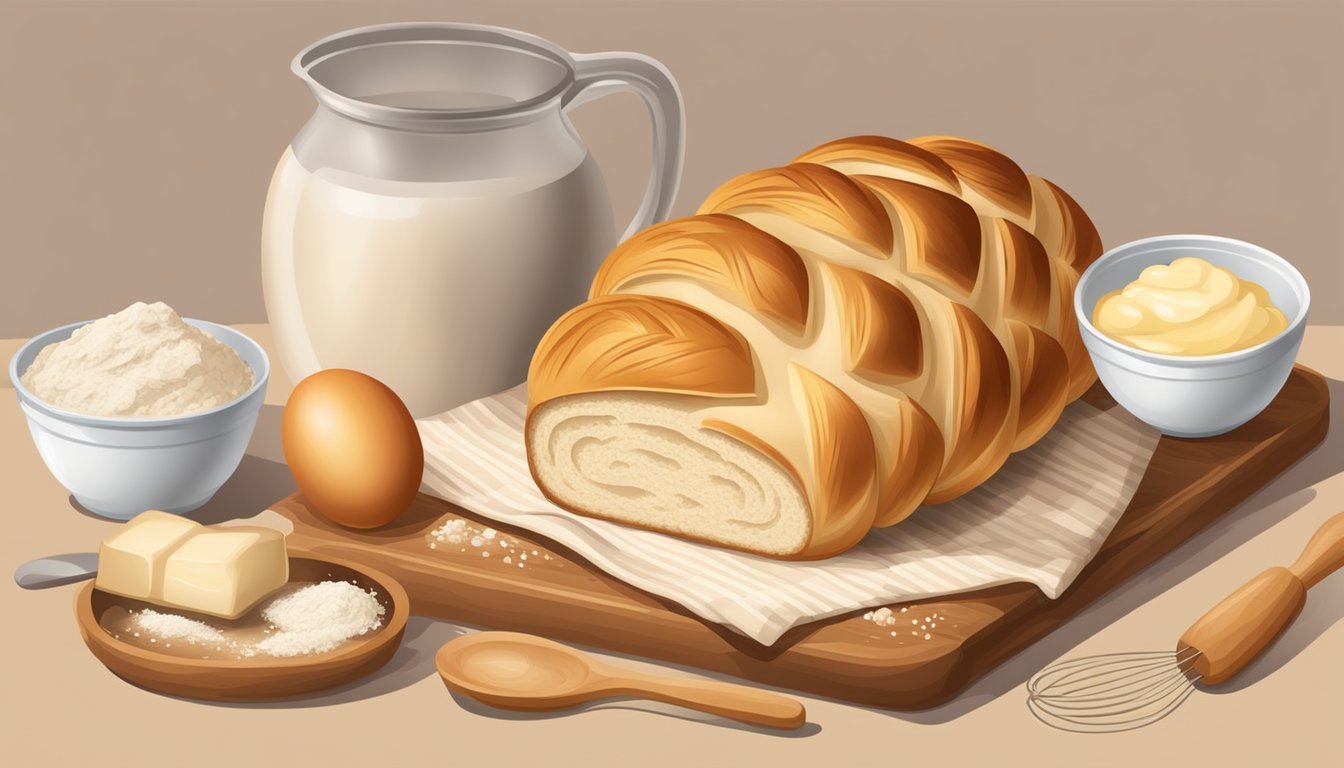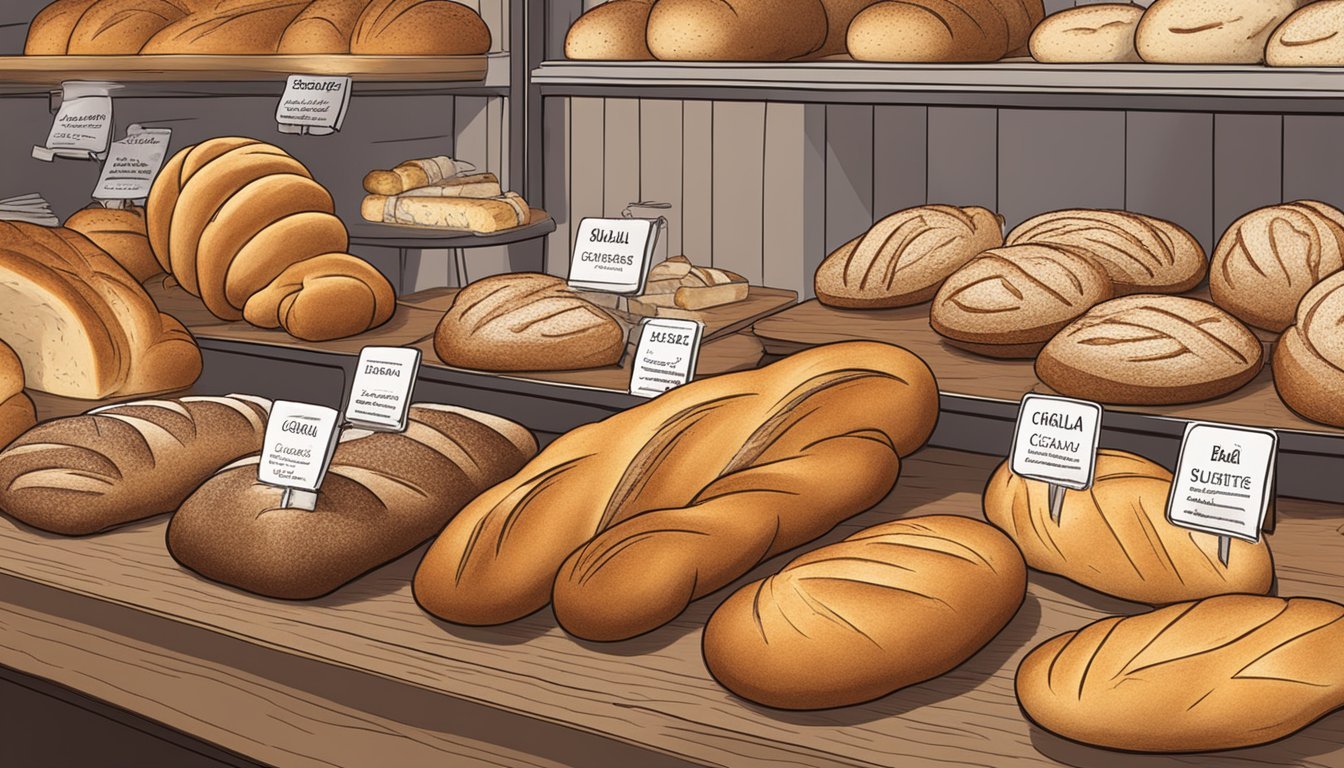Challah Bread Substitutes
Top Alternatives for Your Recipes
Challah bread is a traditional Jewish braided bread, rich and slightly sweet, commonly enjoyed on the Sabbath and holidays. It is a staple in Jewish cuisine, characterized by its golden color and soft texture, which comes from enriched dough made with eggs, oil, and sugar. Given its cultural and religious significance, challah holds a special place at the table during ceremonial occasions.
When challah bread isn't available, or when someone is looking for a variation, several substitutes can step in without compromising the integrity of the dish they're making. Brioche bread, with its similar egg-heavy and buttery dough, emerges as a close alternative, offering a richness that rivals that of challah. The French baguette, known for its crispy crust and soft crumb, and the soft, yeasty Italian bread are other excellent substitutes. These alternatives maintain the delicate balance between texture and flavor necessary for dishes that traditionally use challah, such as French toast or festive sandwiches (What wine goes well with sandwiches?).
Choosing the right bread substitute hinges on both the desired flavor profile and the culinary context. While there is a variety of breads that can replace challah in a pinch, each brings a nuanced difference to the table – from the subtle sweetness of some to the rustic crust of others. The selection ensures that the essence of challah can be emulated regardless of the recipe, providing both a suitable stand-in and an opportunity to experiment with new textures and tastes.
Overview of Challah Bread
Ingredients and Preparation
Challah is a traditional Jewish bread noted for its rich, intricate braids and soft texture. It typically includes basic ingredients such as:
Flour
Yeast
Eggs
Sugar
Oil
Salt
Significance to Jewish Culture
For Jewish people, challah holds cultural and religious significance. It is customarily consumed on the Sabbath and during various Jewish holidays, marking it as a celebratory and symbolic loaf.
The Bread’s Characteristics
The bread’s texture is tender and pillowy, a result of the eggs and sugar that enrich the dough. These ingredients not only impart flavor but also contribute to challah’s slightly sweet taste. Challah’s crust is typically golden brown, often shiny from a glaze applied before baking.
Unique Braiding
One of challah’s defining features is its braid. The braiding of challah isn't just for aesthetics; it bears religious meaning as well. The loaves are often braided with three or six strands, though variations exist for different occasions.
By understanding challah’s ingredients, cultural relevance, and distinctive features, individuals can appreciate the bread beyond its culinary uses, acknowledging its place in Jewish tradition and communal gatherings.
Ingredients in Challah Bread
Challah bread is a traditional Jewish bread that is easily distinguishable by its braided appearance and rich taste. A combination of staple ingredients is responsible for its texture and flavor.
Flour
Essential for structure, flour is the primary ingredient in challah bread, typically a high-protein wheat flour which gives the bread its chewy texture.
Yeast
Yeast is a key leavening agent used in the production of challah bread. Its fermentation process releases gases that cause the dough to rise, contributing to the bread's soft and airy crumb.
Eggs
Eggs are integral to challah, both enriching the dough and contributing to its iconic golden crust when applied as an egg wash. They also add richness and a slight sweetness to the flavor profile.
Sugar
Sugar provides sweetness and is crucial for the yeast fermentation, aiding in the leavening process. It caramelizes in the baking process, giving the crust a glossy, appetizing appearance.
Oil
Challah commonly contains oil, often olive oil, which imparts moisture and helps create a tender crumb. It also adds a subtle depth of flavor.
Salt
Salt in challah regulates yeast activity and strengthens the gluten network. This ingredient also enhances flavor, balancing the sweetness in the bread.
Water
Water hydrates the dough, dissolving sugar, salt, and yeast. It's vital for gluten formation, which affects the bread's final texture.
Challah Bread Characteristics
Challah bread, a staple in Jewish tradition, showcases a distinctive texture and flavor, known for its braiding techniques, and follows a particular rise and bake process that lends its unique qualities.
Texture and Flavor
Challah is known for its soft crumb and slightly sweet flavor. It typically contains ingredients like eggs, sugar, and oil, which contribute to its rich and tender texture. The outer crust is usually glossy and golden, offering a satisfying contrast to the soft interior.
Braiding Techniques
The bread is most recognizable by its braid, which can range from a simple three-strand plait to intricate weaves of six strands or more. This braiding isn't just for aesthetics; it affects the bread's texture by creating a layered effect that is both visually appealing and pleasurable to eat.
Rise and Bake Process
Challah undergoes a rise process where the dough, made with yeast, is left to proof, creating a light and airy bread. During the baking phase, the high egg content in the dough results in a richly colored crust. The baking temperature and time are calibrated to ensure the bread rises properly, creating the desired texture and flavor profile.
Substitutes for Challah Bread
When searching for a replacement for challah bread, it's important to consider texture, sweetness, and richness. The following bread types offer a range of flavors and textures that can closely mimic or complement the qualities of traditional challah bread.
Brioche Bread
Brioche is a French bread similar to challah but contains more butter. It's known for its rich, tender crumb and golden crust, which makes it a suitable substitute, especially for dishes like French toast where a slightly sweet and sturdy bread is advantageous.
Key Points:
Texture: Tender, soft crumb
Use: Ideal for French toast, sandwiches
Hawaiian Bread
Hawaiian bread offers a subtly sweet flavor and a soft, fluffy texture akin to challah. Its sweetness comes from the addition of pineapple juice and sugar.
Key Points:
Flavor: Slightly sweet with a tropical hint
Use: Can be used in sweet or savory dishes
French Baguette
A French baguette, while crustier, can serve as a challah substitute in sandwiches or when a crispier bread is desired. It has a chewy interior and a crunchier exterior.
Key Points:
Texture: Crispy crust, chewy interior
Use: Suitable for sandwiches, bruschetta
Pulla Bread
Pulla bread, a Finnish sweet bread spiced with cardamom, presents a unique option. Its braided form and soft texture provide a visually and texturally similar alternative to challah.
Key Points:
Flavor: Sweet with a hint of cardamom
Use: An alternative for braided bread needs
Sweet Breads
General sweet breads can be good stand-ins for challah due to their similar sweetness and texture. When selecting, opt for breads that are egg-based and have a soft crumb to best replicate challah's characteristics.
Key Points:
Flavor: Generally sweeter, with a soft texture
Use: Versatile in both sweet and savory applications
Recipe Adaptations
When substituting challah in recipes, the aim is to mimic its rich flavor and soft texture. Each alternative bread can be adjusted to bring it closer to challah's qualities, making recipe adaptations straightforward.
Challah French Toast
For French toast, brioche is a suitable substitute for challah. One should soak thick slices of brioche in a mixture of eggs, milk, vanilla, and a touch of cinnamon. The key is to allow the brioche to absorb the mixture well before frying to achieve a custardy interior akin to challah-based French toast.
Bread Pudding
For bread pudding, opt for a dense French baguette or Italian bread. These breads absorb liquids efficiently without disintegrating, which is crucial. It's recommended to cube the bread and thoroughly soak it in a custard base made of eggs, milk, and sugar, along with desired flavorings to replace challah's inherent sweetness.
Sandwiches
Sandwiches benefit from the use of Italian bread when challah is not available. The bread should be sliced thickly to support sandwich fillings. If the recipe calls for a touch of sweetness, a light brushing of a simple syrup on the Italian bread can help replicate challah's flavor profile.
Breakfast Dishes
For breakfast dishes, such as savory stratas or sweet breakfast bakes, French baguette or Italian bread can be utilized effectively. The bread cubes should be slightly dried out to mimic challah's ability to soak up the egg-milk mixture without becoming soggy. A light toasting can help achieve the desired texture.
Dietary Considerations
When seeking substitutes for challah bread, it is important to consider various dietary restrictions. For individuals with gluten sensitivities, vegan diets, or specific food allergies, finding appropriate alternatives requires attention to ingredient lists and preparation methods.
Gluten-Free Alternatives
For those requiring gluten-free options, they must look for breads made from alternative flours such as almond, rice, or coconut flour. Gluten-free challah recipes often incorporate a blend of these flours along with xanthan gum to mimic the texture of traditional challah. Supermarkets and health food stores may carry gluten-free breads that can serve as suitable substitutes.
Example substitutes:
Almond flour challah
Gluten-free oat bread
Vegan Options
Vegan individuals avoid all animal products, so vegan challah substitutes should not contain eggs, honey, or dairy. Vegan-friendly breads can be found that use substitutes like flax "eggs", non-dairy milk, and vegan butter. These ingredients maintain the rich, soft texture associated with challah.
Common vegan alternatives include:
Brioche-style bread with plant-based ingredients
Flax bread with non-dairy milk
Allergen-Free Substitutes
People with allergies to ingredients typically found in challah, such as eggs or dairy, must choose breads that omit these allergens. Several brands offer allergen-free breads, where the recipes are carefully crafted to avoid common triggers.
Allergen-free considerations:
Egg-free: Look for breads that utilize egg replacers.
Dairy-free: Choose breads made with oil or vegan butter instead of dairy.
The carefully chosen products or recipes will ensure that dietary restrictions are accommodated without compromising on the enjoyment of dishes similar to those for which challah is traditionally used.
Cultural Variations of Braided Breads
Braided breads are a remarkable aspect of many cultures, with various regions lending their unique flavors and ingredients to this uniform weaving technique. Notably, several varieties stand out for their similarities to Challah, a bread deeply embedded in Jewish traditions.
Zopf Bread, hails from Switzerland, is typically consumed on Sundays. It resembles Challah with its braid, but it contains milk and butter, giving it a richer taste and a tender crumb.
Moving to North Africa, Mouna Bread originates from the Algerian and Tunisian communities. It’s a braided or round bread, often flavored with orange blossom water or citrus zest, making it distinct in flavor and aroma.
In the Middle East, Kubaneh Bread, a Yemenite delight, is traditionally slow-cooked overnight and served on Sabbath morning. Kubaneh is a pull-apart bread, known for its flaky layers rather than a braided structure.
Greece’s contribution, Tsoureki Bread, is a sweet, braided bread with a soft, rich texture. It’s associated with Easter and often contains spices like mahlab and mastic, which impart a unique flavor profile.
In Central Europe, one finds Vanocka Bread, a staple in the Czech Republic during Christmas. It’s a braided bread enriched with eggs, milk, and butter and may contain nuts and dried fruits.
Lastly, Kalach Bread—found in Eastern Europe, especially Russia and Ukraine—is a circular braided bread. It compares to challah through its egg-based dough but typically boasts a more decorative shape and sometimes includes fillings.
Each bread has its own cultural significance, and while they share the braiding technique with Challah, their flavors and ingredients reflect the diversity of their respective culinary heritages.
Baking Tips and Techniques
Mastering the art of Challah bread substitutes requires attention to baking techniques, particularly when it comes to kneading, braiding, and yeast management. Precise baking temperatures are also crucial to achieve the perfect crust and texture.
Kneading and Braiding
When substituting Challah, kneading the dough adequately is key — this process helps develop gluten, which gives the bread its structure and chewiness. A mixer with a dough hook can make the kneading process easier, but one can also knead by hand until the dough is smooth and elastic. Challah’s signature appearance comes from braiding which, for substitutes, may not be necessary but can be emulated for aesthetic purposes. To braid, divide the dough into equal parts, roll into long strands, and weave together before allowing to rise.
Steps for Kneading Dough:
Combine dry and wet simple ingredients until a shaggy dough forms.
Knead for approximately 10 minutes by mixer or 15 minutes by hand.
Dough should be tacky but not overly sticky, and spring back when poked.
Braiding Technique (If desired):
Divide dough into three or more strands, depending on the braiding style.
Pinch strands together at one end and braid tightly, securing at the other end.
Yeast Proofing
For the dough to rise properly, yeast proofing is vital. Use active, frothy yeast mixed with warm water to ensure the dough rises well. The water should be between 105-110 degrees Fahrenheit; too hot and the yeast will die, too cold and it won't activate. Let the yeast sit in the warm water until it becomes frothy before adding to the mix.
Yeast Proofing Steps:
Dissolve yeast in warm water, often with a pinch of sugar to feed the yeast.
Wait 5-10 minutes until the mixture is frothy before using.
Baking Temperatures
Finally, baking temperatures are crucial. Most breads bake well at a high temperature, which helps to create a desirable crust. A general guideline for Challah substitutes is to bake at a temperature between 350-375 degrees Fahrenheit. Oven thermostats can be inaccurate, so using an oven thermometer can help ensure the ideal baking environment for a golden-brown crust.
Optimal Baking Temperatures:
For a soft crust: 350°F (175°C) for 20-25 minutes.
For a more well-done, crispy crust: 375°F (190°C) for 20-25 minutes.
Remember, a confident baker is always attentive to details, whether it's the temperature of water for yeast or the level of heat in the oven.
Frequently Asked Questions (FAQs)
Is Challah bread similar to Brioche?
Yes, Challah and Brioche are similar in that they both have a rich, tender crumb due to the inclusion of eggs and fat in their recipes. However, Brioche typically contains more butter and eggs than Challah, giving it a richer flavor and a softer texture. Furthermore, Brioche dough is usually enriched with milk, while Challah is often pareve, meaning it contains no dairy.
What can be used as a substitute for Challah bread?
Substitutions for Challah bread include:
Brioche: Sweet, rich, and has a similar texture. Excellent for French toast.
French Baguette: Crisper crust, yet suitable for sandwiches.
Italian Bread: Tender crumb and subtle sweetness; usually contains olive oil for added richness.
Sourdough: Tangier flavor but can provide a satisfying texture when used in recipes like French toast.
Substitute Characteristics Best Used For Brioche Rich, tender crumb, sweet Desserts, French Toast French Baguette Crispy crust, soft interior Sandwiches Italian Bread Soft texture, slightly sweet flavor Sandwiches, Toast Sourdough Tangy flavor, chewier texture Artisan Sandwiches, Savory French Toast
Can other types of bread be used in recipes calling for Challah?
Certainly. When substituting Challah in a recipe, it's important to consider the texture and flavor of the bread in relation to the end dish. For instance, recipes that require a softer texture, like bread pudding or French toast, may fare well with Brioche or Italian bread as substitutes. It is always recommended to choose a substitute that complements the flavor profile and structure of the dish being prepared.


